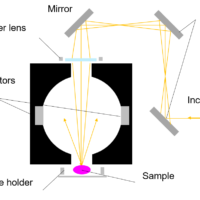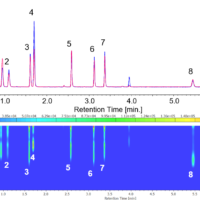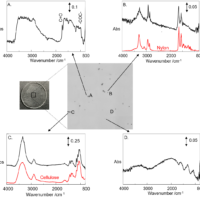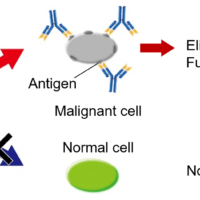An integrating sphere is a spherical cavity whose inner wall is coated with a highly reflective material such as barium sulfate (Fig. 20). In an integrating sphere, light undergoes multiple reflections so that the intensity becomes uniform, and some part of this reflected light enters the detector. The presence of a sample can change the optical path, as in the cases of scattering due to sample turbidity, non-planar samples, and thick samples. An integrating sphere is indispensable when the position and size of the light beam received by the detector changes due to a change in the optical path, and the transmittance cannot be measured.
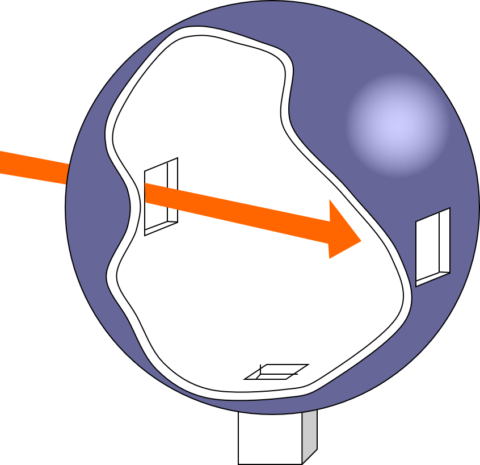
Fig. 20 Structure of integrating sphere
As shown in Fig. 21, when the reflection spectrum of a sample (blue line) is measured, it sometimes has an unexpected shape (red line). In most cases, this is caused by a dirty reflectance standard white plate or integrating sphere. In the case of a dirty reflectance standard white plate, the reflectance particularly in the ultraviolet region decreases. If such a plate is used as a reference, the reflectance measured for a sample will be abnormally high.
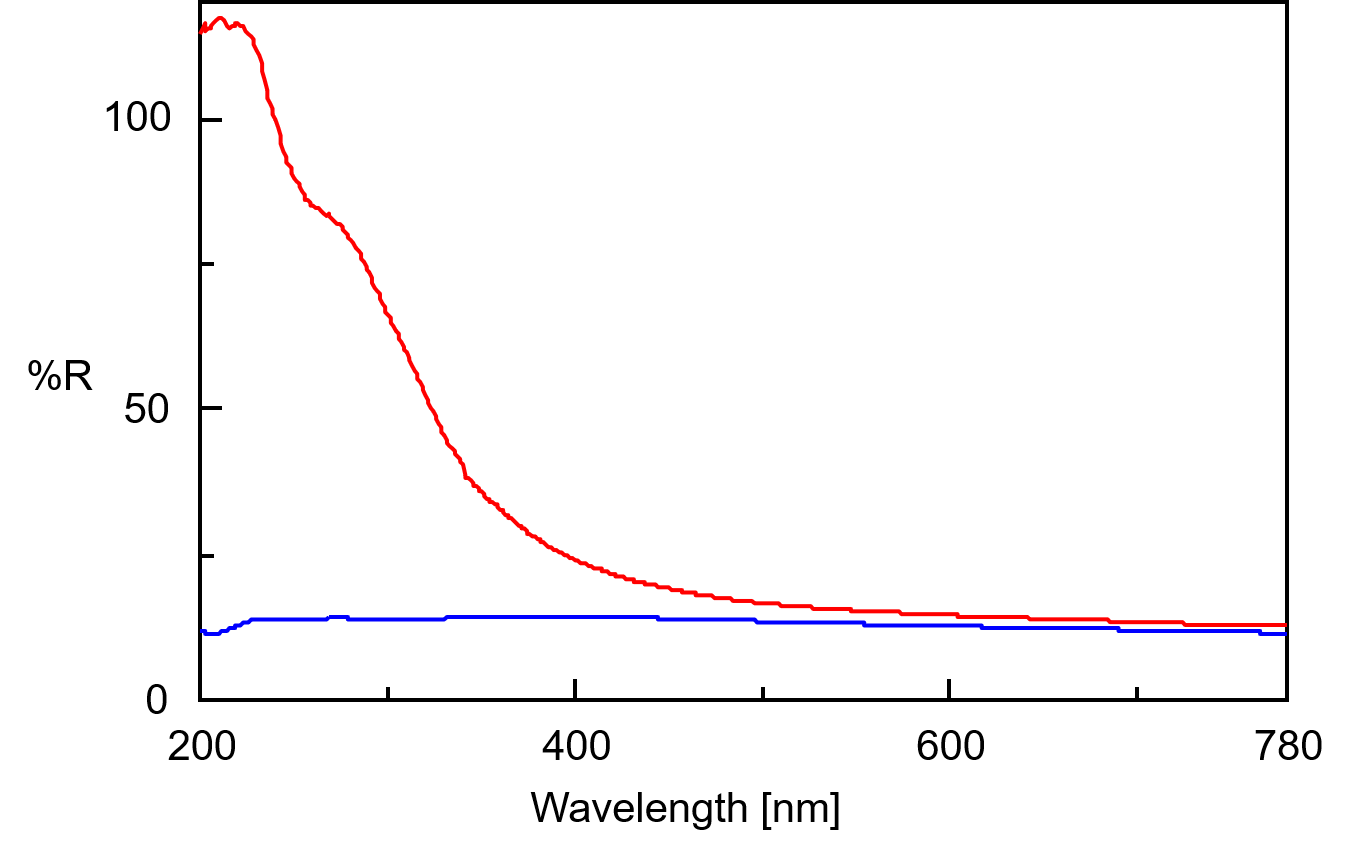 Fig. 21 Example of abnormal sample spectrum (red)
Fig. 21 Example of abnormal sample spectrum (red)
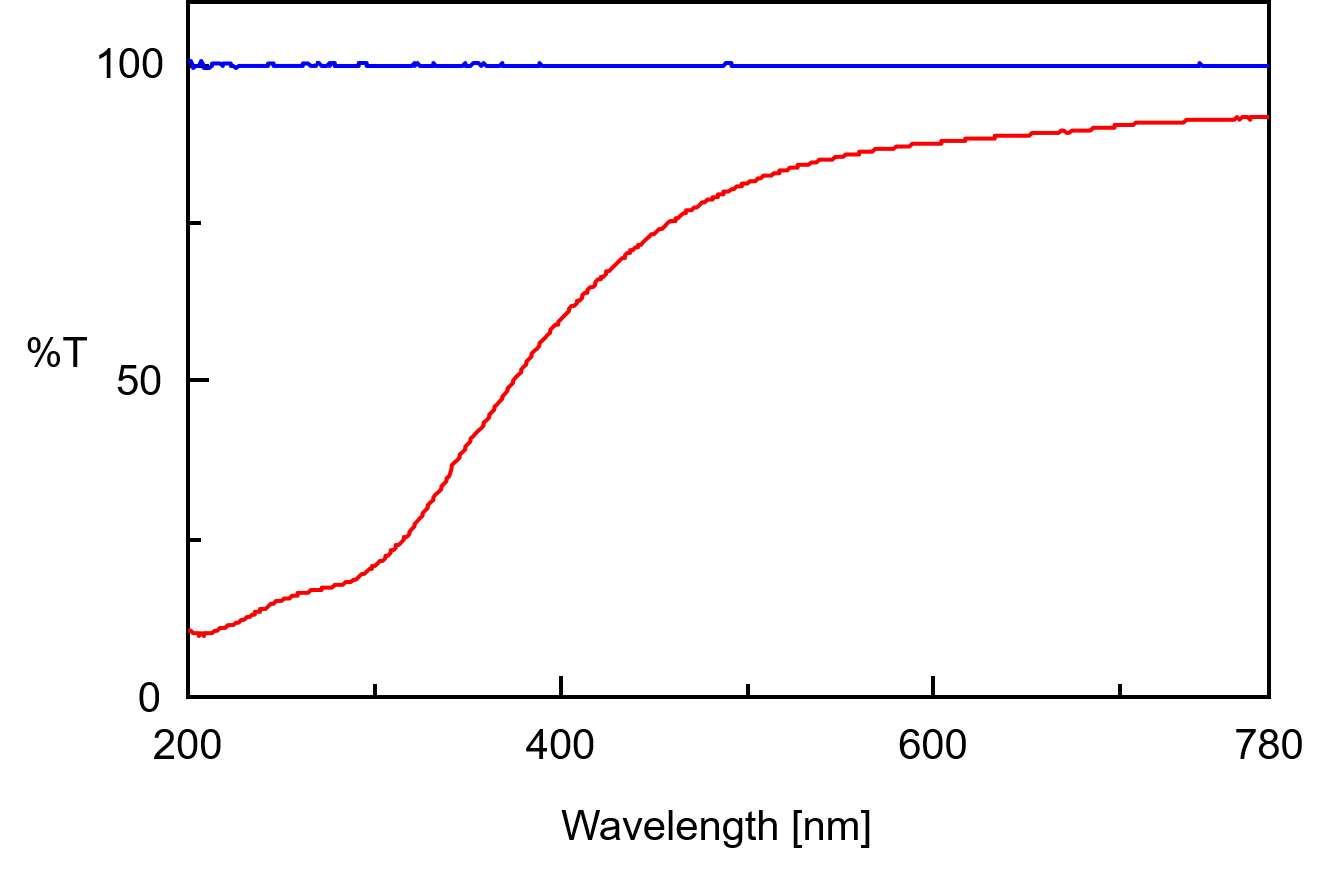 Fig. 22 Spectra of dirty white plate (red) and new white plate (blue)
Fig. 22 Spectra of dirty white plate (red) and new white plate (blue)

